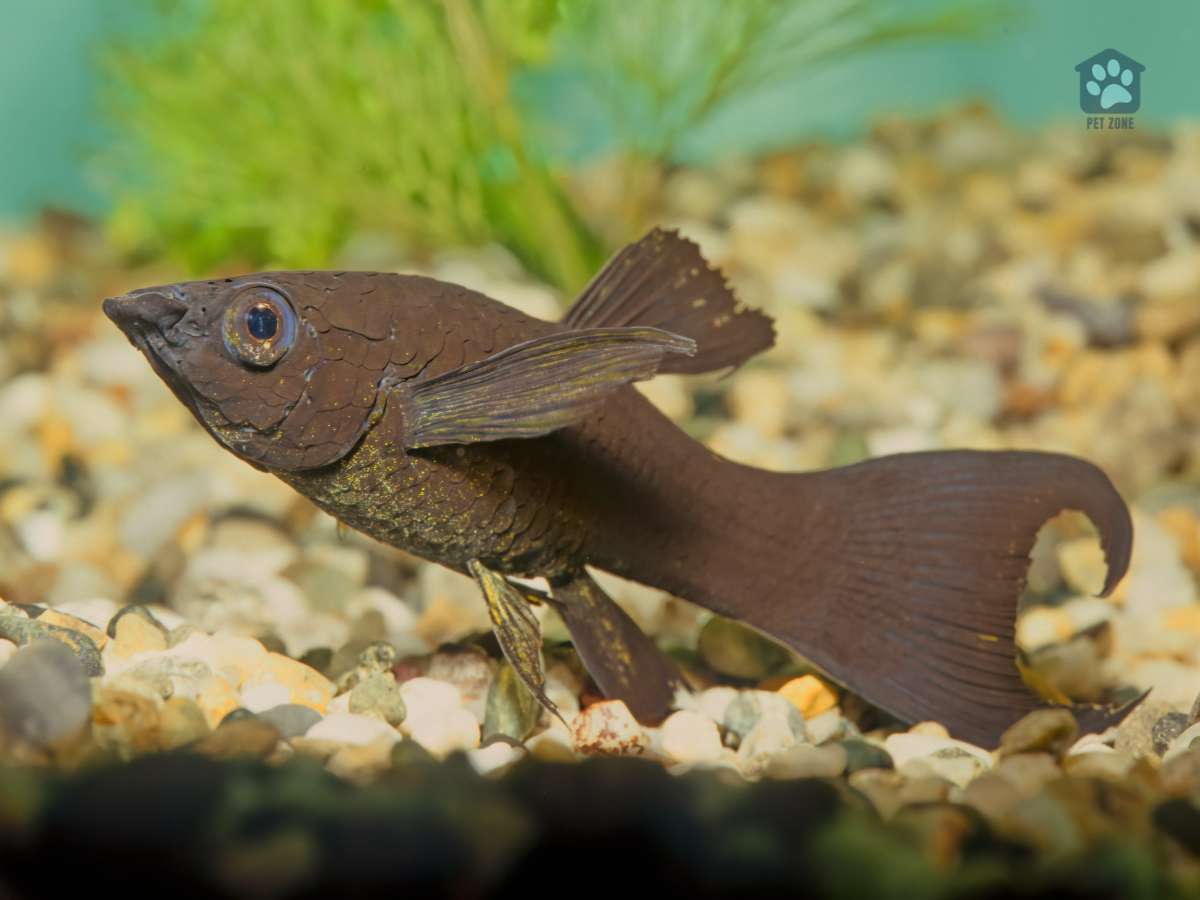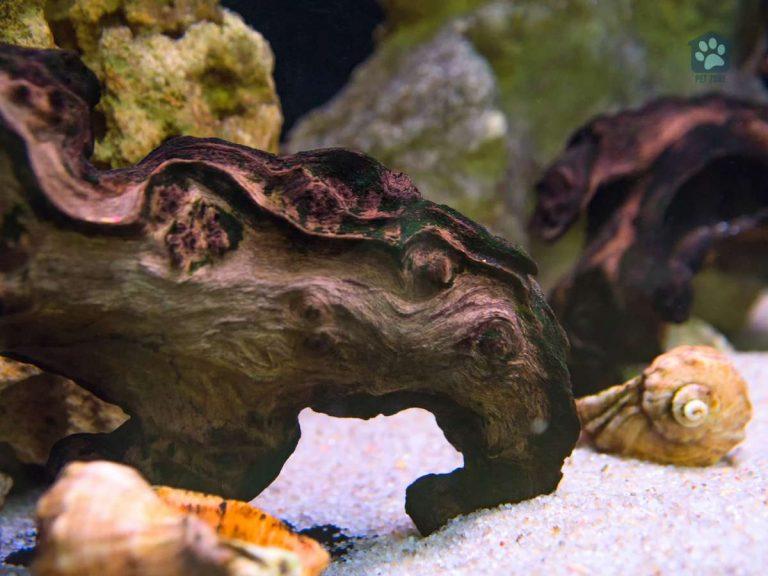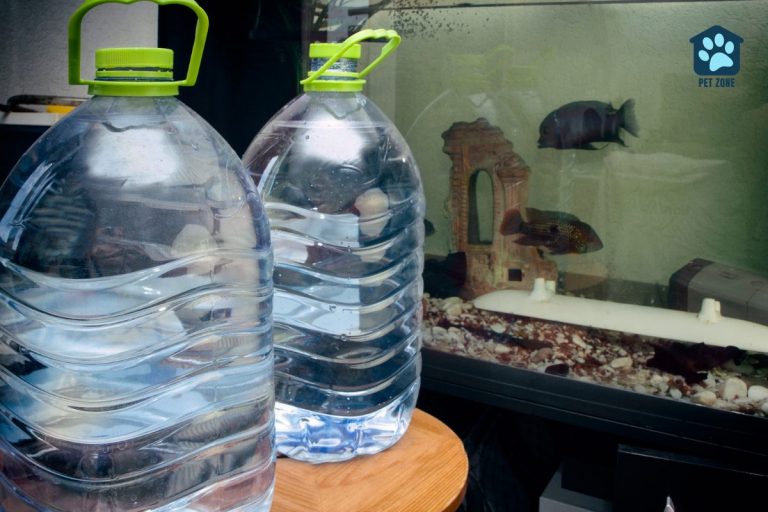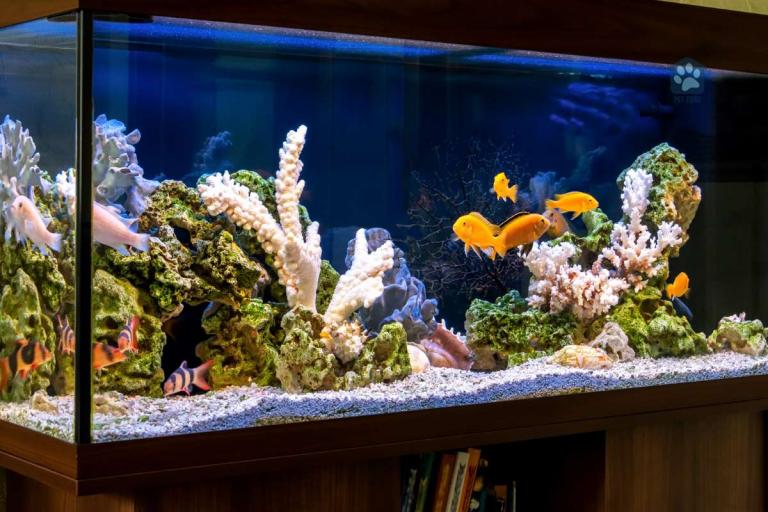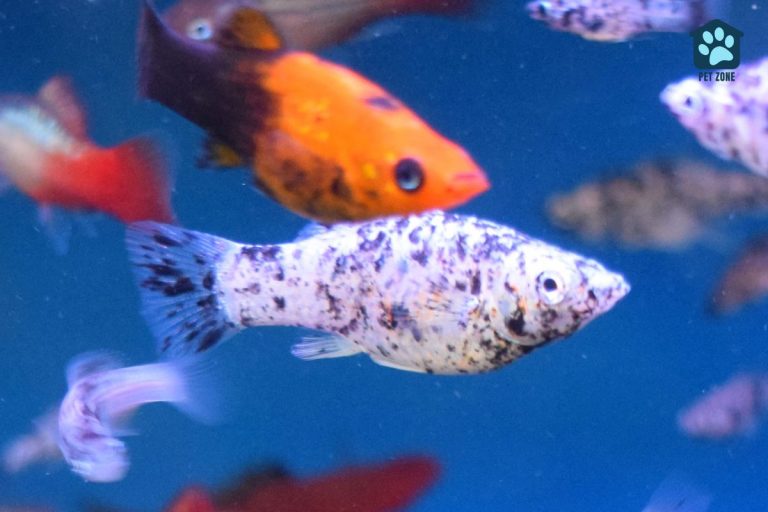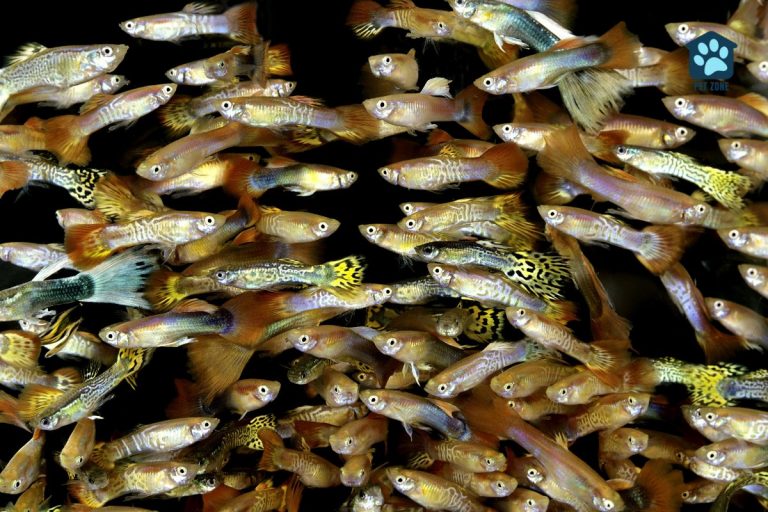Estimated reading time: 11 minutes
Finding your molly fish sitting at the bottom of your fish tank can be worrisome. This might indicate a range of issues, from swim bladder infections to stress or even pregnancy. Our informative blog post will guide you through the likely reasons for this behavior and offer practical solutions to keep your pet healthy and happy.
Let’s dive in to help you better understand your molly fish’s world!
Key Takeaways
- Molly fish may lay on the bottom of the tank due to swim bladder infections, illness, stress, or inappropriate water conditions.
- Swim bladder infections can be caused by overeating and constipation. It’s important to watch how much your molly fish eats and seek help from a vet if it shows signs of this infection.
- Illness or disease can cause molly fish to sink to the bottom of the tank. Dropsy is a serious sickness that affects their liver and kidneys. Treating any illness promptly helps keep your fish healthy.
- Stress or trauma from other fish in the tank or poor water quality can make molly fish stay at the bottom. Keep an eye out for rapid breathing and signs of pain or pressure.
- Inappropriate water conditions like high levels of ammonia and nitrite can also cause molly fish to stay at the bottom. Regularly testing water parameters and doing proper maintenance will keep your molly healthy.
- Female Molly fish have a round belly when pregnant while males have a sleek body with black lines indicating they are getting ready to give birth.
- Signs of illness in molly fish include loss of appetite, lethargy, rapid breathing, and faded coloration. Prompt action is needed when these signs occur.
- To address molly fish lying on the bottom, maintain good water conditions, treat underlying illnesses, and provide a stress-free environment.
Reasons Why Mollies Stay at the Bottom of the Tank
Molly fish may stay at the bottom of the tank due to swim bladder infections, illness or disease, stress or trauma, and inappropriate water conditions.
Swim bladder infections
Molly fish can get swim bladder infections. This makes them stay at the bottom of the tank. Overeating and constipation cause these infections. A sick fish breathes fast and lays on the bottom.
To keep your molly healthy, watch how much it eats. If your molly shows signs of this illness, get help from a vet right away.
Illness or disease
Molly fish can get sick just like other pets. Illness or disease may make them sink to the bottom of the tank. Sometimes, molly fish struggle with disorientation caused by swim bladder infections, making it difficult for them to reach the top of the tank.
Dropsy is a serious health problem you don’t want to ignore. It makes their bellies puff up like a balloon. Often, the mollies start to swim less and hide more. This condition is usually a sign of a bigger issue, like bad bacteria in their system. Dropsy itself isn’t a disease; it’s more like a symptom of something else going wrong.
So, if you spot a molly with a swollen belly, act fast. Separate the sick fish from the healthy ones. Consult a vet and consider starting treatment. Keep an eye out, and take quick action to help your fish get back to swimming happily.
Stress or trauma
Molly fish may sink to the bottom of the tank due to stress or trauma. This can come from other fish in the tank. If this happens, your pet fish isn’t feeling safe. Poor water quality can add more stress too.
Even a small hurt on their body can lead to trauma for molly fish. Watch if your molly is lying at the bottom and breathing fast. This could be a sign that it’s not just sleeping but dealing with pressure or pain.
Inappropriate water conditions
Molly fish may stay at the bottom of the tank if there are inappropriate water conditions. This could be due to high levels of ammonia and nitrite in the water, which can make it difficult for them to breathe properly.
Poor water quality, even in tanks that have been established for a while, can also cause Molly fish to stay at the bottom. If the tank is not well-maintained and neglected, it can create an unhealthy environment for them and even lead to their death.
So, it’s important to regularly test the water parameters and perform regular water changes to keep your Molly fish healthy and happy.
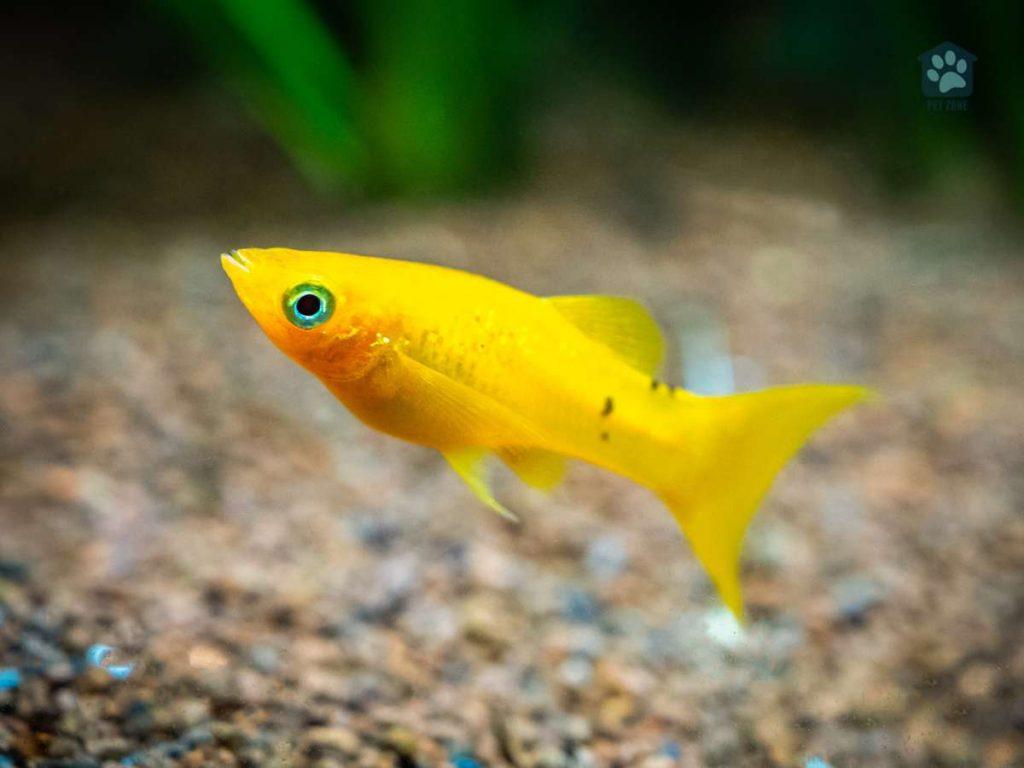
How to Tell if a Molly Is Pregnant
To determine if your Molly fish is pregnant, observe its physical appearance, changes in behavior, and a distended abdomen. Read more to learn how to identify these signs of pregnancy in your fish.
Physical appearance
Pregnancy in Molly fish can be determined by observing their physical appearance. Female Molly fish have a round and swollen belly, which becomes even bigger during pregnancy. Look for a dark triangular mark near the anal area, as this is another sign of pregnancy in Molly fish.
On the other hand, male Molly fish have a sleek and torpedo-shaped body. If you notice a marked black line crossing the belly of your Molly fish, it may indicate that she is getting ready to give birth.
By paying attention to these physical traits, you can easily determine if your Molly fish is pregnant or not.
Changes in behavior
Pregnant Molly fish may display changes in their behavior. Normally they get along with other freshwater fish, but they might seek refuge at the bottom, behind plants or decorations in the tank. Female Molly fish may also show an increased appetite and become more aggressive when they are pregnant.
One noticeable change is the presence of a dark spot near their abdomen, known as a gravid spot. This can be a good indication that your Molly fish is expecting babies. It’s important to provide proper care and monitoring for both the pregnant Molly fish and the fry to ensure their well-being.
Distended abdomen
A distended abdomen is when a Molly fish’s belly looks bigger than usual. It can happen because the fish is pregnant. During pregnancy, the belly of a Molly fish becomes thicker and more pronounced.
You might even see a V-shape at the bottom of her stomach right before she gives birth. This swelling in the belly is different from other conditions like constipation or dropsy. So if you notice your Molly fish has a big round belly, it’s likely that she’s pregnant!
Common Signs of Illness in Molly Fish
Molly fish may show signs of illness through loss of appetite, lethargy, rapid breathing, and faded coloration.
Loss of appetite
Loss of appetite in Molly fish is a common sign that something may be wrong. When your fish loses its appetite, it might start to stay at the bottom of the tank and become more lethargic.
This can also cause changes in its coloration. Loss of appetite can be caused by various factors such as stress, illness, or poor water quality. It’s important to address this issue promptly because if your Molly fish stops eating completely, it could be a sign that it is sick or near death.
Fish tuberculosis, which is caused by bacteria called mycobacterium, can also lead to loss of appetite in Molly fish. Creating a stress-free environment and maintaining good water conditions are essential for keeping your fish healthy and happy.
Lethargy
Lethargy is when your Molly fish seems tired and lacks energy. It’s a common sign of illness in these fish, which could explain why they’re lying on the bottom of the tank. Lethargy can be caused by various factors, such as swim bladder infections, disease, stress, or even old age.
If you notice your Molly fish being sluggish and not swimming around like usual, it’s important to address the issue promptly. Observing other signs of illness, like loss of appetite or faded coloration, can help determine the cause and appropriate treatment for your fish.
Rapid breathing
Rapid breathing is something you need to watch out for if you have a Molly fish. It’s actually a common sign that your fish might be feeling sick. Rapid breathing can happen because of a few different reasons.
One possibility is that your fish has parasites called gill flukes, which can make them breathe faster than normal. Another reason could be poisoning from ammonia or carbonate in the water, which can also cause rapid breathing.
Lastly, if your fish is stressed or being bothered by other fish in the tank, it might start breathing quickly too. So if you notice your Molly fish breathing rapidly, it’s important to pay attention and take action to help them feel better.
Faded coloration
If you notice that your Molly fish has faded coloration, it may be a sign that something is wrong. Faded coloration is a common sign of illness in Molly fish and can indicate that the fish is sick and in need of treatment.
In fact, if a black Molly fish starts to appear more grayish or silver instead of its usual dark color, it could be a symptom of a dying fish. Other signs such as lack of appetite, swollen gills, lethargy, clamped fins, and changes in behavior are also indicators that something isn’t right with your Molly fish.
It’s important to address these issues promptly to ensure the health and well-being of your pet.
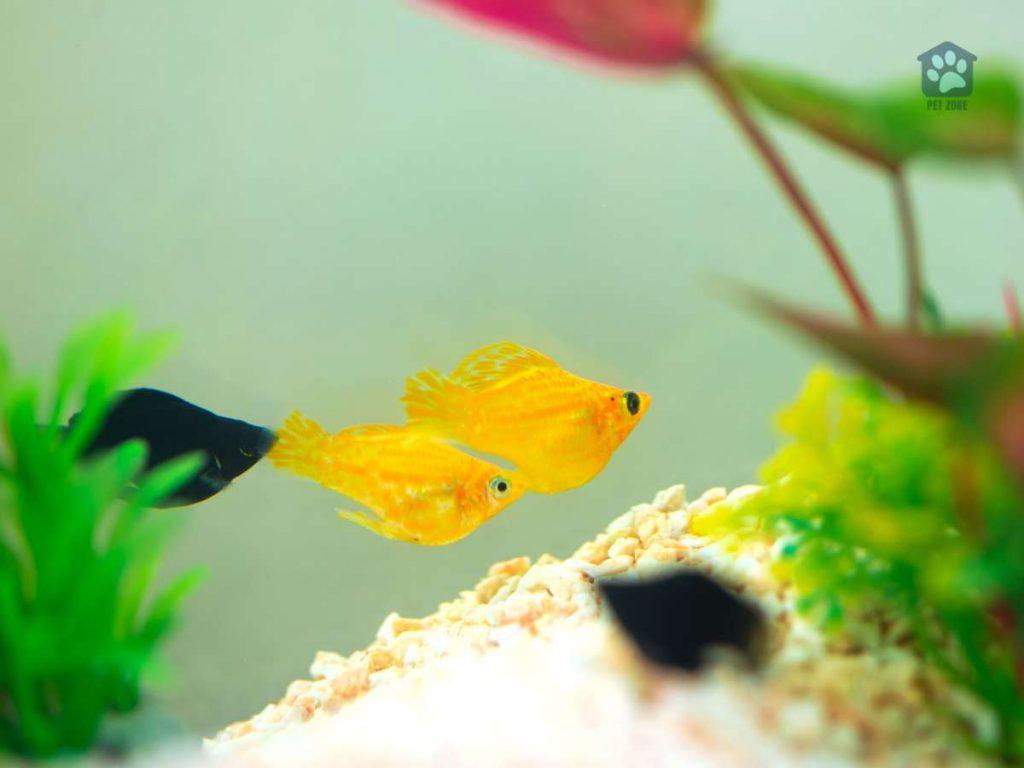
Steps to Address Molly Fish Lying at the Bottom of the Tank
To address your Molly fish lying on the bottom of the tank, make sure to maintain appropriate water conditions, treat any underlying illnesses or infections, and provide a stress-free environment.
Find out more ways to help your fish thrive by reading the full article!
Maintain appropriate water conditions
To keep your Molly fish healthy and prevent them from lying on the bottom of the tank, it’s crucial to maintain appropriate water conditions. This means ensuring that the temperature is suitable for your fish, as extreme temperatures can harm them.
Additionally, monitoring and controlling ammonia and nitrite levels in the tank is important since high levels of these substances can be toxic to fish. It’s also essential to ensure proper oxygenation in the aquarium by providing adequate filtration or using an air pump.
Regular water changes are recommended to maintain good water quality and prevent any buildup of harmful substances. By taking these steps, you can create a safe and comfortable environment for your Molly fish, helping them stay active and vibrant in their tank.
Treat any underlying illnesses or infections
If your Molly fish is lying on the bottom of the tank, it could be a sign of an underlying illness or infection. It’s important to address any health issues your fish may have to ensure their well-being.
Swim bladder infections and bacterial or parasitic infections are common causes for Molly fish staying at the bottom of the tank. To help treat these conditions, you can use appropriate medication recommended by a veterinarian specializing in aquatic animals.
Additionally, maintaining good water quality and providing a stress-free environment can also aid in their recovery. Regularly testing the water parameters and performing necessary water changes will contribute to creating a healthy living space for your Molly fish.
Provide a stress-free environment
To help your Molly fish feel more comfortable and reduce stress, it’s important to provide a stress-free environment in their tank. Start by ensuring that the water conditions are appropriate for them, including maintaining good water quality and temperature.
Regularly monitor the water parameters and do regular water changes to keep the tank clean. It’s also important to create hiding places or shelter in the tank where your fish can retreat if they feel scared or stressed.
Adding plants, rocks, or other decorations can provide these hiding spots. Finally, make sure to avoid overcrowding the tank with too many fish or introducing aggressive tank mates that might bother your Molly fish.
Conclusion
In conclusion, if you notice your molly fish laying on the bottom of the tank, it could be due to swim bladder infections, illness or disease, stress or trauma, or inappropriate water conditions.
To address this issue, ensure proper water conditions, treat any underlying illnesses, and provide a stress-free environment for your fish. By taking these steps, you can help keep your molly fish healthy and happy in their tank.
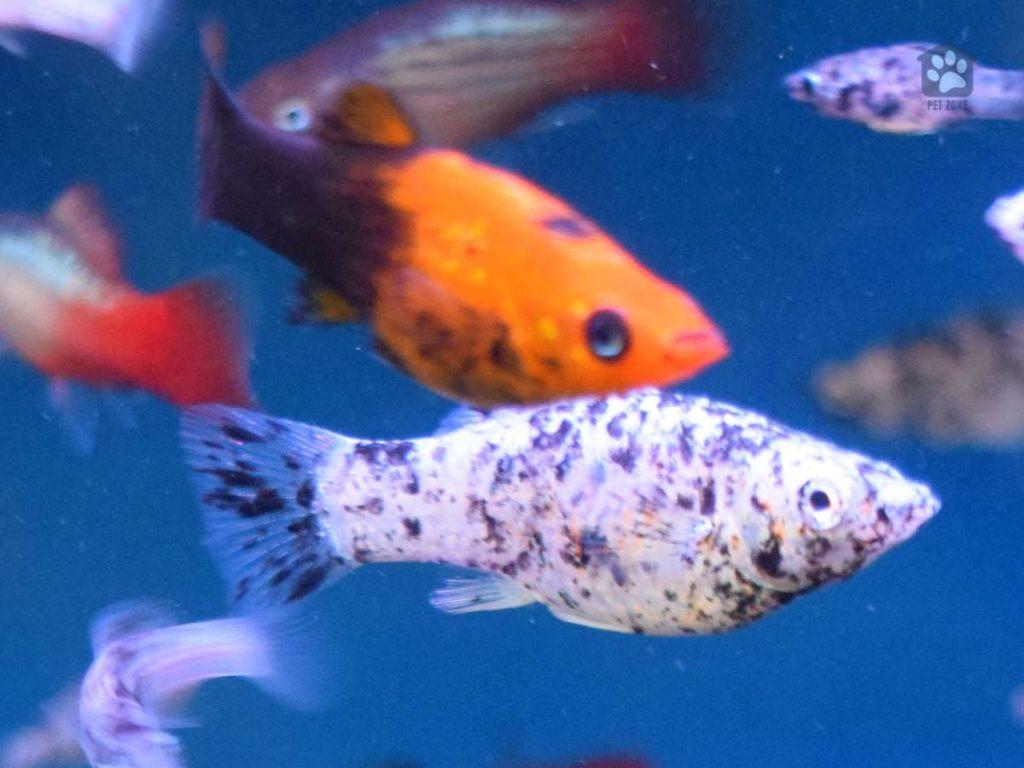
FAQs
1. Why is my molly fish laying at the bottom of the tank?
A molly fish might be laying on the bottom of its tank due to a bladder disease, inappropriate temperature, or it is just how mollies sleep.
2. What should I do if my molly fish stays at the bottom too much?
If your molly fish spends most of its time at the bottom and struggles to swim back to the top, seek expert advice as it may have swim bladder disease or other common fish diseases.
3. Is it normal for pregnant mollies to lay at the bottom of their tank?
Yes. Pregnant female mollies often sit around near or on the bottom when they are about to give birth.
4.Are there things that can help a sick sitting Molly get better?
Yes! Aquarium salt in a recovery or separate tank could help heal an unwell molly sitting at the bottom too long from common issues like fin rot and fungus.
5.What does my new tank need if I see my black Mollie lays on the bottom?
A new tank may need cycling before adding any freshwater aquarium fish including Mollies. A properly cycled tank will protect your fish’s health.
6. Is sleeping cause possible for seeing Molly lays near the bottom ?
Fish species like Molly do sleep, and while sleeping, mollies stay close towards the bottom. It’s completely normal unless combined with other unusual behavior.
As an Amazon Associate I earn from qualifying purchases.



